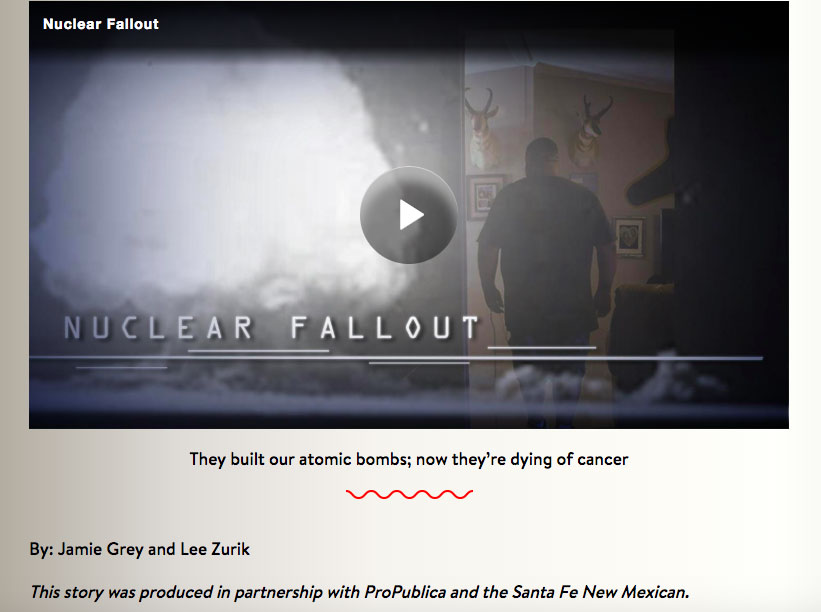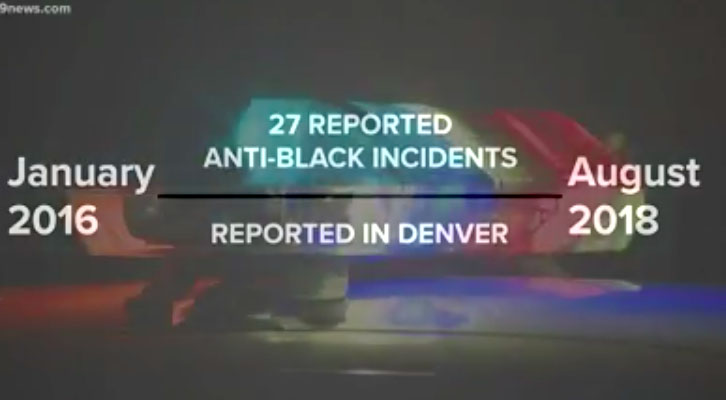
Traditionally, the TV news claim to authority has been based on three powerful myths: omniscience, omnipresence, and omnipotence. Stations have built their branding on the illusions that 1) we know everything; 2) we are everywhere; and 3) we do this all by ourselves. Stations’ presentations and promotion relentlessly reinforce the messages of uniqueness, ubiquity, and exclusivity.
That’s one reason local TV newsrooms are way behind in a trend that’s transforming local journalism on the print and digital fronts: collaboration. Of the 180 collaborative journalism projects in an ever-expanding database created by the Center for Cooperative Media at Montclair State University, only a handful involve commercial local TV stations. Ditto for the 160 news organizations participating in ProPublica’s collaborative Documenting Hate project, or the 160 (oddly, yes, the same number) newsrooms that form the Solutions Journalism Network.
Why don’t TV news people play more nicely in the sandbox? “Journalists are competitive, but TV news journalists are ultra-competitive,” says Stefanie Murray, director of the Center for Cooperative Media. Well, perhaps that made sense when the “competition” was just the other stations down the street, but every news director worth his or her salt knows that the real competition today is all the other ways that consumers — especially younger ones — get their local news and information.
Another factor is economics: struggling newspapers and fledgling digital startups have a greater incentive to collaborate than does a profitable TV station. But that’s changing too, as TV newsrooms stretch to deliver more and more hours of news to shrinking and aging audiences while trying to create a compelling suite of digital products and services at the same time. “With so many different platforms, it’s only natural to look for partners to scale better,” says Murray. “It’s not one to many. It’s really many to many. You can’t do it alone anymore.”
And in fact some stations are now experimenting with joint projects. Two months ago, we reported on the challenging but ultimately successful collaborative investigation by WLBT in Jackson, MS and the digital nonprofit news site Mississippi Today. The Nieman Lab recently followed up on our case study in Christine Schmidt’s series Collaborating with Local TV, which says right off the top that collaboration “may be a key part of how local news remains sustainable.”
Shortly after the Denver Post did a story on Denver hate crimes based on data from ProPublica’s Documenting Hate project, which tracks data and reporting about hate crimes around the country, TEGNA’s KUSA became one of the few commercial TV stations to join the project and created its own original report on why those crimes are so difficult to prosecute. Two news organizations in the same market, both drawing data from the same collaborative resource, each doing its own original reporting. “Understand that stories are going to look different in different mediums,” says Rachel Glickhouse, ProPublica’s partner manager for the project. “They will have value for potentially different audiences.” Glickhouse and her team are publishing a toolkit for newsrooms that want to do more collaborative data-based journalism.

The Solutions Journalism Network works with newsrooms to report on viable answers to some of today’s pressing social issues. “These are entrenched problems that you’re covering in the community,” says SJN’s Liza Gross, who has the wonderful title of “VP, newsroom practice change.” Speaking of newsroom change, Gross’s colleague Carolyn Robinson is training 15 local TV newsrooms in solutions journalism techniques with a grant from the Chan Zuckerberg Initiative. And NBC10 in Philadelphia has joined Resolve Philadelphia, a 22-partner consortium of news organizations collaborating on solutions-based projects. Liza Gross has created a collaborative playbook based on an earlier Philadelphia initiative, The Reentry Project.
“Collaboration is important for investigative reporting, but also in general,” says Lee Zurik, who runs Gray’s InvestigateTV OTT channel while anchoring and reporting at WVUE in New Orleans. “Collaboration allows more resources to be thrown at projects. You may be reaching new people that don’t watch or read your product. Also, it’s nice to learn new things, new philosophies.”
InvestigateTV recently collaborated with ProPublica and the Santa Fe New Mexican on a story about radiation poisoning among nuclear industry workers, and Zurik has done Peabody and Murrow award-winning work at WVUE with the New Orleans Times-Picayune and its digital arm, NOLA.com. “Viewership is splintered these days,” says Zurik. “The more people that can see your work and your station branding, the better it is for you” — even if that means collaborating with the local paper and its website. “We were scared for a while: they’re going to publish ahead of us, that’s going to hurt our ratings. In fact it may have helped us.”
If you’re thinking about launching a collaborative project in your market, here are three tips from the experts.
- Identify a topic that’s important to your viewers and that would benefit from additional resources or skills you might not have, like a data journalist — try to fill a needs gap when you choose a partner
- Start small — perhaps with a “one-off” event or story, a single partner, and a simple content exchange, for which each newsroom does its own reporting
- Consider working with a mission-driven nonprofit like the ones we’ve mentioned — they’re not trying to “out-scoop” you
Most important, just try one collaboration and see what happens. As Solutions Journalism Network’s Liza Gross says, “If you’re #1, you’ve got nothing to lose. If you’re #3, you’ve got nothing to lose.”
Do you have examples of collaborative journalism you’d like us to look into? Please share them at cronkitenewslab@asu.edu.
[NOTE: The Knight Foundation, which funds the Knight-Cronkite News Lab, also provides support to the Solutions Journalism Network and ProPublica.]